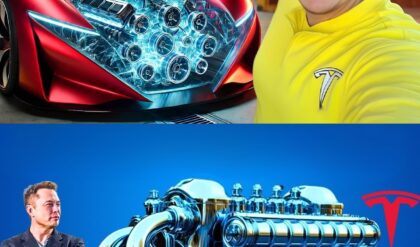Elo Musk’s ambitious plan to revolutionise the trucking industry with the Tesla Semi has taken the world by storm. Yet despite the hype and early successes, the big electric truck is yet to be mass-produced. Why? While the Tesla Semi promises to change everything, Tesla’s CEO remains confident that high volumes aren’t needed at this stage – what they need are solid results and positive reviews.
Early adopters like PepsiCo and DHL are already praising it, citing seamless integration into their fleets and high driver satisfaction. For example, the Semi consumes just 1.6 kWh per mile, cutting fuel costs to about $25 per 100 km compared to $80 for a diesel truck. Plus, it can charge to full capacity in just 30 miles. Tesla aims to eventually produce 50,000 Semis, but full-scale production is still a few years away.

So how did Eloë Musk transform the trucking industry with just one model?
According to Lars Moravy, Tesla’s vice president of vehicle engineering, pilot production will begin in the second half of next year, with full production expected to be ready by 2026. Tesla’s Gigafactory in Nevada is currently producing the Semis on a small scale, but a new dedicated facility nearby is expected to be ready by the end of 2025 to help meet the 50,000-unit goal.
Tesla’s third-quarter earnings guidance for 2024 showed promising signs, with Semi profits soaring to $2.17 billion, up 177% year over year. Ramp-up at the Nevada Gigafactory has been steady, with about 250 Semis completed through October. If this pace holds, Tesla could see 1,000 units produced next month.
Will Tesla’s Semi be ready for mass launch in 2025?
Eloп Musk has confirmed that the Tesla Semi will be available worldwide and it is already receiving praise for its advanced technology and zero-emission capabilities. The company has also invested heavily in rigorous testing, proving the Semi’s durability and reliability. During a reception test, the Tesla Semi traveled 384 miles on a single charge, proving its short-distance capabilities.
Logistics giants like DHL and PepsiCo have also tested the vehicle. After running a 3,000-mile test route over two weeks, DHL confirmed that the Semi was ready for its network and expressed strong interest in adopting it. Musk himself has said that “any company that doesn’t adopt an electric semi-truck will lose.”

What makes the Tesla Semi different?
The Tesla Semi’s specs are nothing short of impressive. It can accelerate from 0-60 mph in just 5 seconds when charged and less than 20 seconds when fully charged, making it faster than many diesel trucks. Tesla offers two range options: 300 miles and 500 miles, both with fast charging. Tesla stations can charge up to 70% in just 30 miles, minimizing downtime.
Despite its $150,000 price tag for the 300-mile version, the Semi offers significant savings. Its energy costs are about a third of those of diesel vehicles, and over three years, fuel savings alone could exceed $200,000. Plus, the Semi has fewer moving parts than a diesel truck, reducing maintenance costs by about $50,000 over five years.
A look into the future
The Tesla Semi’s impressive performance isn’t just about efficiency, but also reliability. With a reported uptime of 95%, the Semi is already making waves in the logistics industry. Major companies like PepsiCo have integrated it into their fleets, highlighting its superior comfort and performance compared to traditional diesel trucks.
As the Semi moves to gain traction, it’s not just about the vehicle itself. Tesla is pushing the boundaries with its self-driving capabilities. The company’s AI team has achieved full self-driving (FSD) functionality for the Semi. With Tesla’s AI prowess and substantial investments in autonomous driving, implementing FSD could revolutionize long-distance transportation, making it safer and more efficient.

FSD and the future of road transport
Tesla’s self-driving technology has been in development for years. By 2025, the FSD system will be available for the Semi, reducing costs for fleet operators by minimizing downtime and optimizing routes. Tesla has already begun testing the FSD system on its other vehicles, and now the Semi is set to benefit from this innovative technology.
Tesla has also made great strides in its charging infrastructure. The company’s network of Superchargers, including those designed for the Semi, is expanding rapidly. A new 1,800-mile corridor between Texas and California, featuring 750 kW chargers, will ensure Tesla Semi drivers have fast-charging options available on major routes.
The road ahead
The Tesla Semi isn’t just a prototype; it’s already here and it’s transforming the trucking industry. With a range of up to 1,056 miles per day and cutting-edge technology, the Semi challenges traditional diesel trucks. As production ramps up and Tesla commits to refining its autonomous driving features, the electric truck promises to redefine the future of logistics.
The Tesla Semi offers a glimpse into the future of transportation, combining sustainability, efficiency, and cutting-edge technology. With its growing list of followers and the promise of further advancements, the Semi may soon become a paradigm shifter in the world of cargo transportation.
What do you think? Will autonomous driving become the standard for long-distance transport? Would you feel safe sharing the road with a fully autonomous semi-truck?
Stay tuned for more updates as Tesla commits to leading the way in electric transportation.





